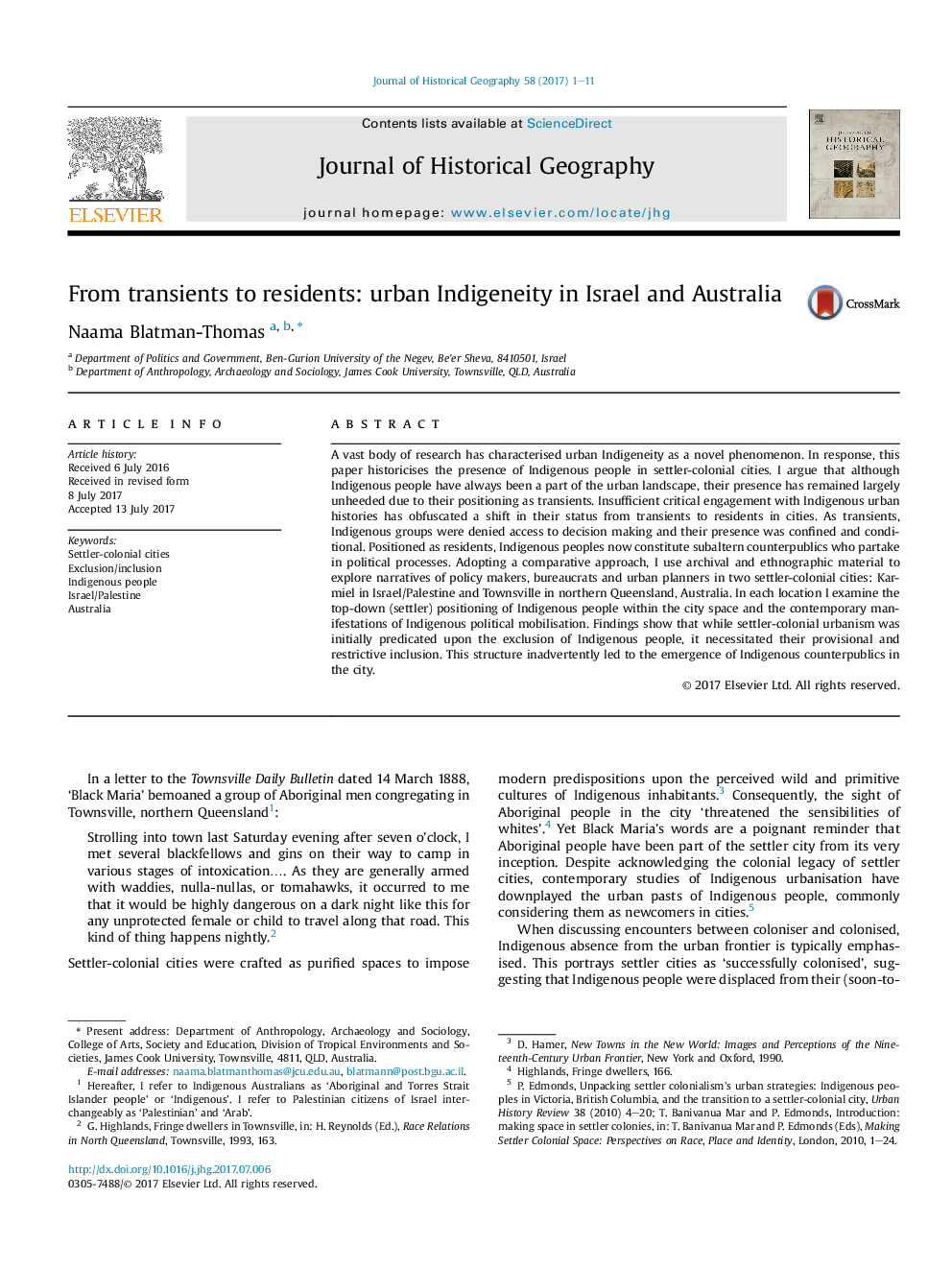| Article ID | Journal | Published Year | Pages | File Type |
|---|---|---|---|---|
| 5112894 | Journal of Historical Geography | 2017 | 11 Pages |
Abstract
A vast body of research has characterised urban Indigeneity as a novel phenomenon. In response, this paper historicises the presence of Indigenous people in settler-colonial cities. I argue that although Indigenous people have always been a part of the urban landscape, their presence has remained largely unheeded due to their positioning as transients. Insufficient critical engagement with Indigenous urban histories has obfuscated a shift in their status from transients to residents in cities. As transients, Indigenous groups were denied access to decision making and their presence was confined and conditional. Positioned as residents, Indigenous peoples now constitute subaltern counterpublics who partake in political processes. Adopting a comparative approach, I use archival and ethnographic material to explore narratives of policy makers, bureaucrats and urban planners in two settler-colonial cities: Karmiel in Israel/Palestine and Townsville in northern Queensland, Australia. In each location I examine the top-down (settler) positioning of Indigenous people within the city space and the contemporary manifestations of Indigenous political mobilisation. Findings show that while settler-colonial urbanism was initially predicated upon the exclusion of Indigenous people, it necessitated their provisional and restrictive inclusion. This structure inadvertently led to the emergence of Indigenous counterpublics in the city.
Related Topics
Social Sciences and Humanities
Arts and Humanities
History
Authors
Naama Blatman-Thomas,
